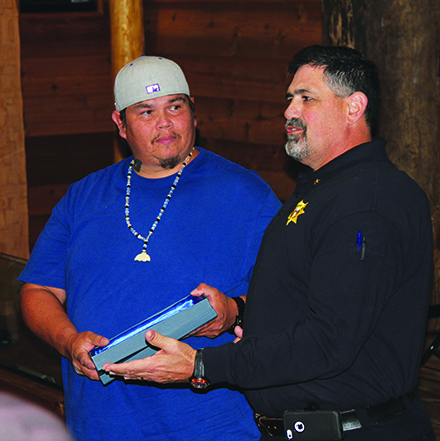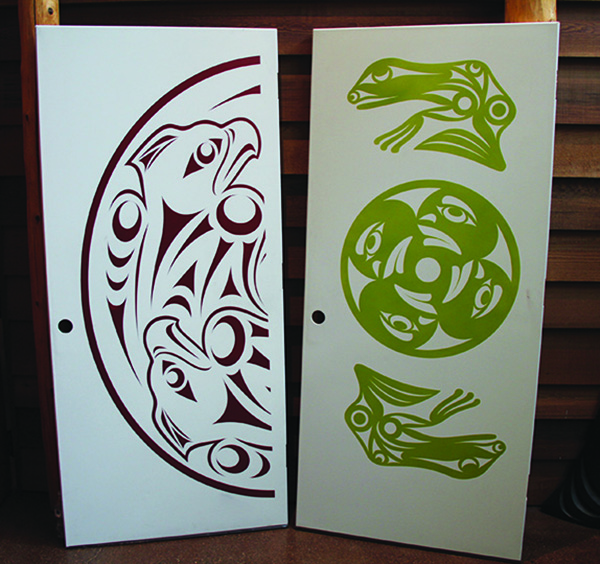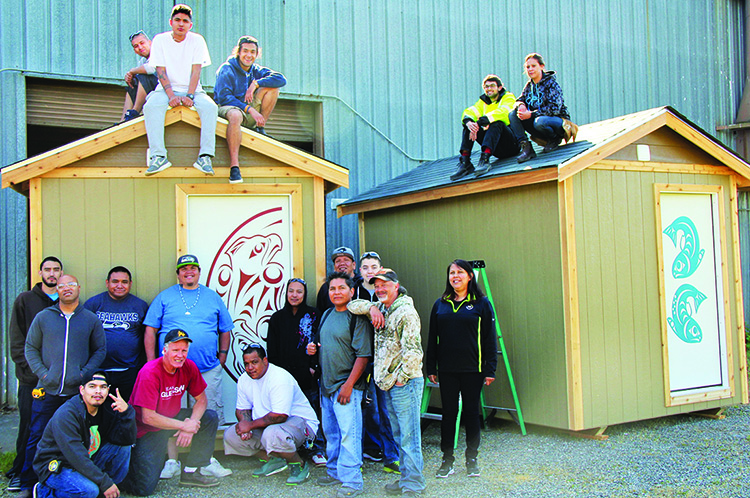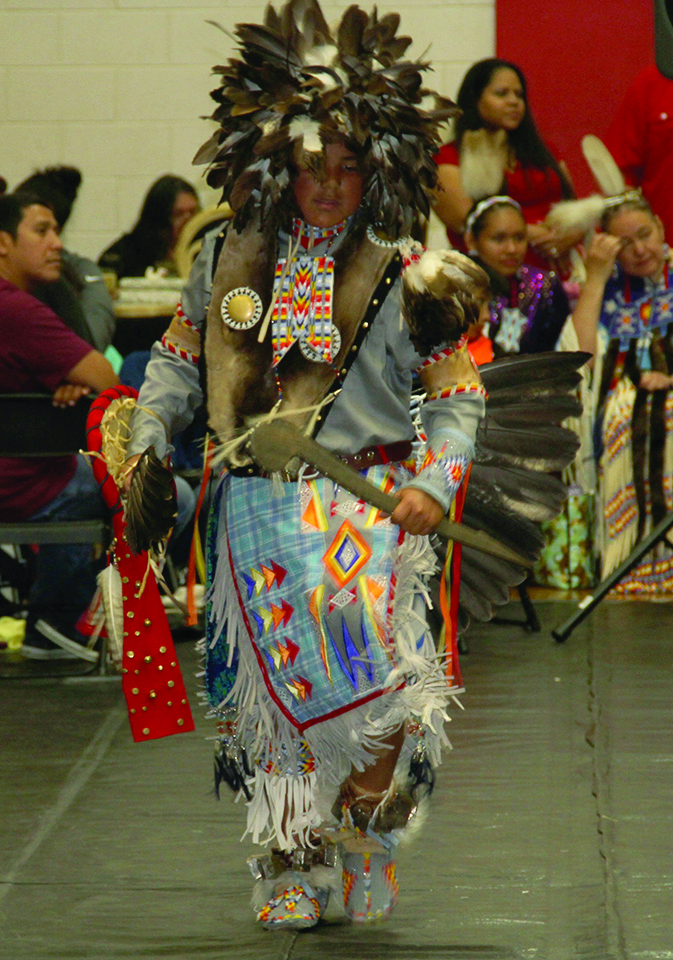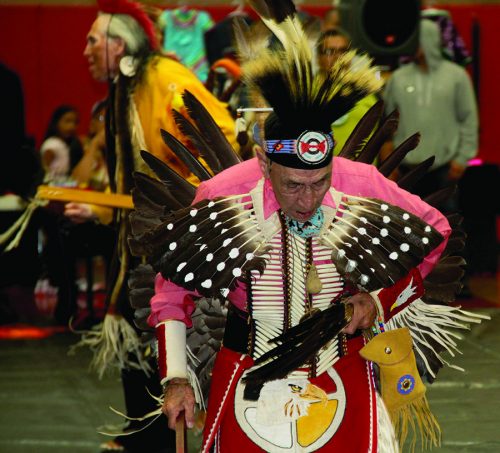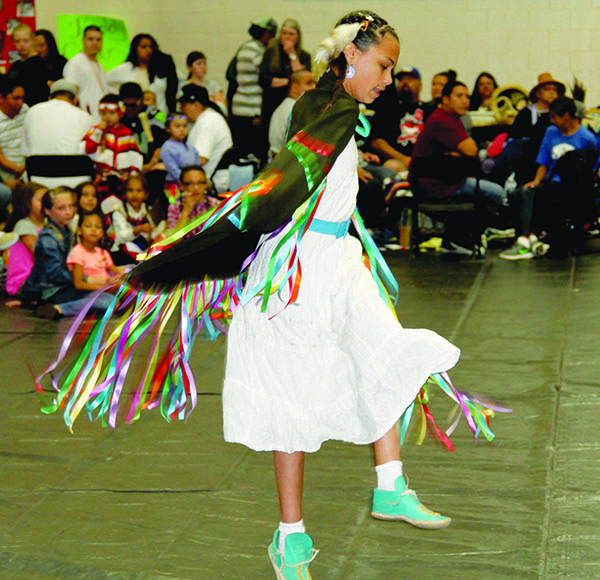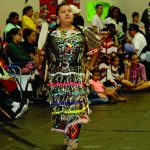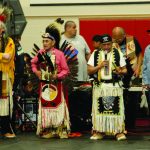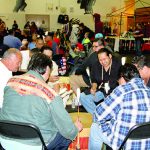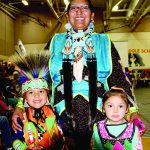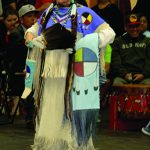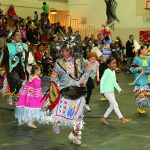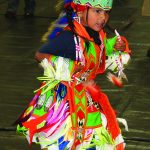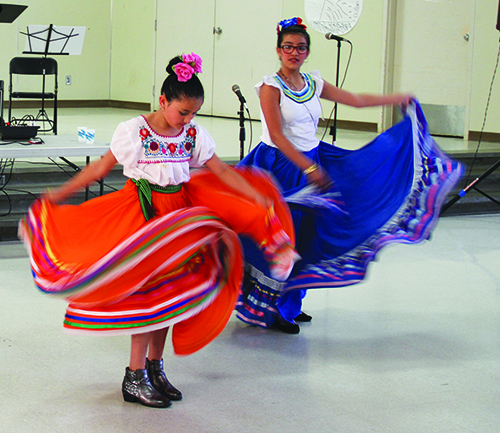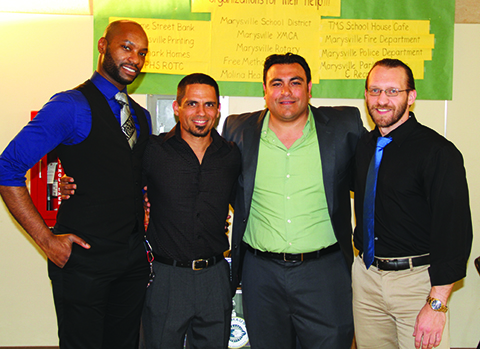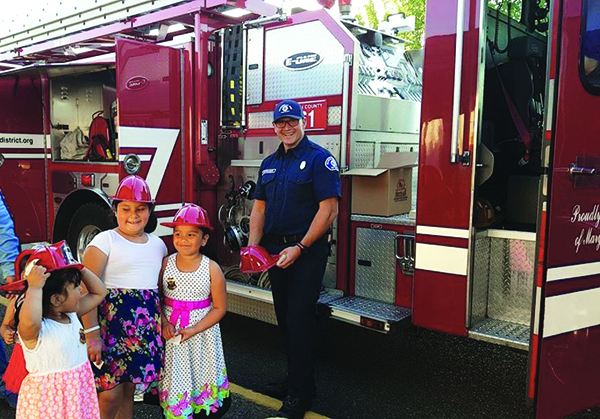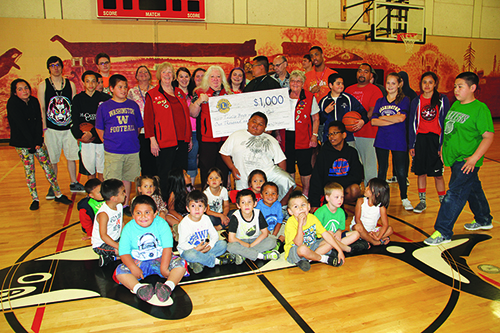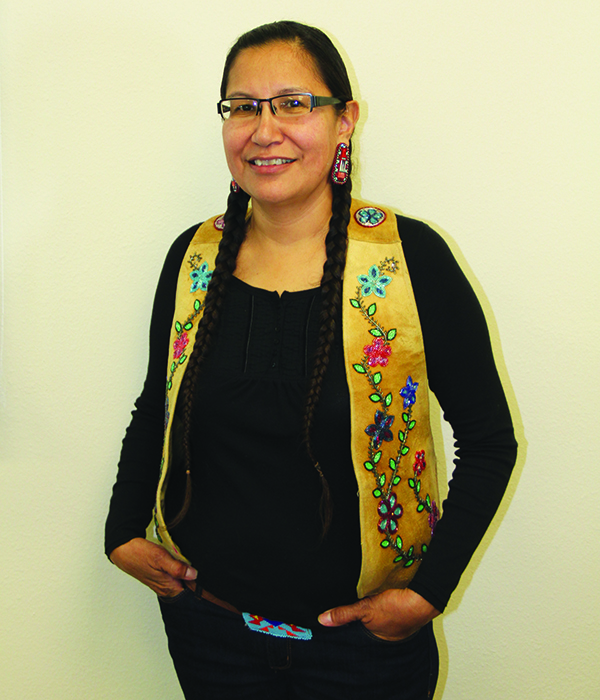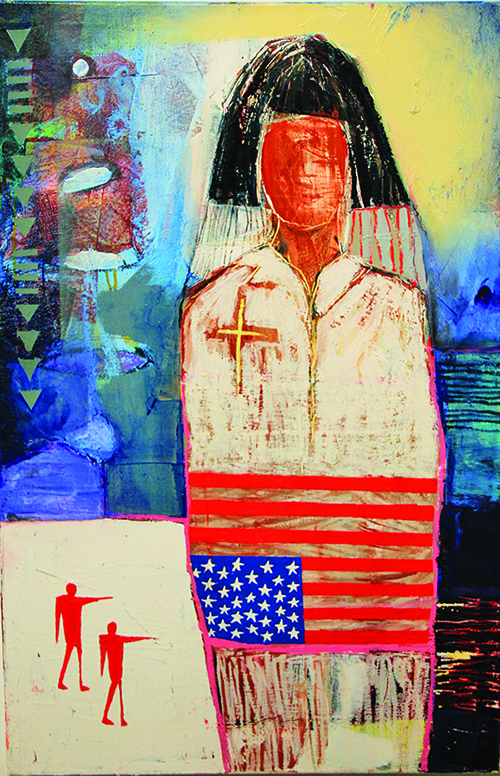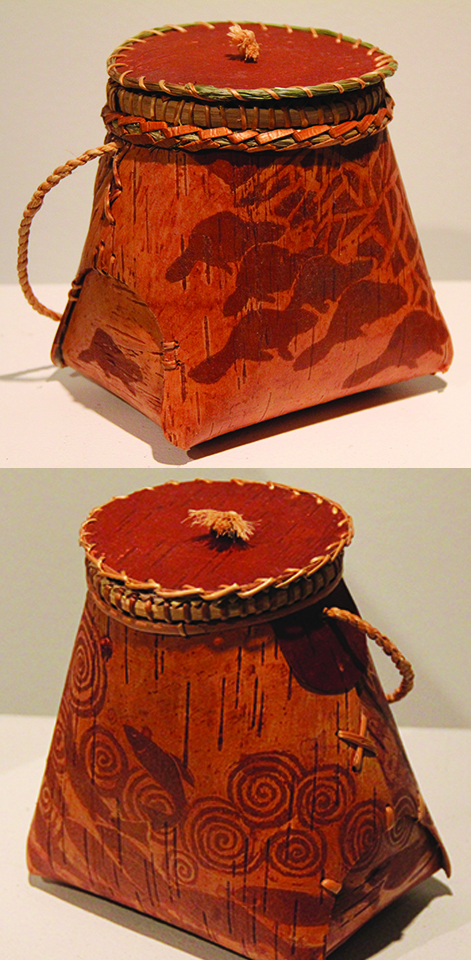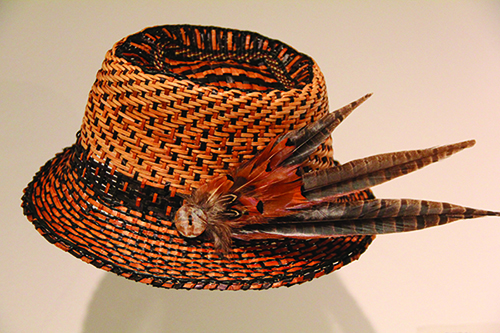
Photo/Kalvin Valdillez
By Kalvin Valdillez, Tulalip News
“He took my sacred place and ripped it in half! I knew it was going to happen, but it still made me sad,” stated a third grade student from Edmonds School District (ESD). The student was referring to an assignment from her teacher where she had to create a ‘Sacred Place’ with all of her favorite things, and with all her favorite people. The student drew her sacred place, which included a rare one-of-a-kind tree that grew sideways at a secluded campsite with her family and friends. As she passionately explained her assignment, it was obvious to see she was extremely excited and attached to her sacred place.
Once the student was finished with her assignment her teacher looked at her drawing, admired it and then tore it in half. “It just made me really sad and a little mad because it was mine.” This emotional scene was a video clip from a presentation to the Tulalip Board of Directors (BOD) on May 18, 2016, one of many exercises that were shown in the presentation provided by the ESD. After the video clip finished, a look around the boardroom showed how emotional the video made everybody feel, the little girl was visibly distraught. Which is when the room was informed that the teacher taped up the drawing for the student.
“That is exactly like where we are now, as sovereign nations, we are trying to tape back together our sacred place,” stated board member Bonnie Juneau. The purpose of the assignment was to show young students how it felt to have their sacred place taken from them and destroyed. With Governor Jay Inslee recently signing Senate Bill 5433 into law, making it mandatory for Washington State Schools to teach the history and governance of the 29 federally recognized tribes of Washington State, ESD is taking a step forward by implementing a curriculum that covers elementary through high school students.
Other clips showed students talking about The Boldt Decision, colonization, and religion. “The book I read stated that the Natives were converted to Christianity,” said a Fifth Grade student, “but then I read that the Natives were forced into Christianity. The first one sounds like they had a choice, the second one sounds like they didn’t have a choice at all.”
Prior to Senate Bill 5433, House Bill 1495 only encouraged schools to teach of the indigenous nations in Washington. Tulalip’s John McCoy, who wrote both Bill 5433 and HB 1495, believes Senate Bill 5433 will be a relationship-builder between different cultures, and will provide a more engaging approach to students who will potentially become our future leaders.
Since Time Immemorial: Tribal Sovereignty in Washington State, or STI for short, is the curriculum created by The Office of Superintendent of Public Instruction (OSPI). STI was pilot tested for the past five years, in fourteen different Washington State schools. Now, it is being implemented by Edmonds Office of Native Education, headed by Program Supervisor Michael Vendiola. Michael explained that STI is a free online curriculum and available to all school districts.
“I think this is great. Growing up I remember checking all of my history text books for Tulalip Tribes, and I never once found anything about our people in those books,” said Chairman Mel Sheldon. “All of it was Plains Indians, and even then, it wasn’t much. It’s heartbreaking that our youth can’t identify themselves in our schools.”
It is no secret that Indigenous Peoples are misrepresented in U.S. History and the media. On a national level, Coastal Native Americans specifically are nearly non-existent in the history courses being taught in schools. The Chairman continued, “I remember being asked, and I am sure everyone in this room at some point has been asked, if I lived in a Tee-Pee when I told somebody I was a Native American.”
Vendiola pointed out that change won’t happen overnight. “This is like our ‘Zero Year’ where we are still seeing what works, what doesn’t, and how we can improve the curriculum.” One of the ways ESD looks to improve STI is to provide the history of the nearest federally recognized tribe. This is a huge change.
“Partnering with The Tulalip Tribes allows us to involve the community in [the] culture close to home. This is our opportunity to change the future.”
The presentation not only showed how concerned and shocked students were, but also showed that most students reacted positively to learning the history and culture of Native People. One mother was astounded by her son’s enthusiasm, stating that he has never talked about what was going on in school, but could not hold in his excitement when learning about the culture. The mother, who at the time was finishing law school at Gonzaga University, continued stating that she was able to have a full discussion with her fifth-gradestudent about fishing rights.
An ESD instructor gave a teacher’s perspective on STI. “I think at first teachers were hesitant to teach this subject because of how harsh the reality is, and also because we didn’t know where to begin. With STI, I believe teachers are discovering how fun and easy this can be.”
He then stated that his students were disappointed when the lesson was over and were not excited to move on to the usually popular Medieval Times lesson.
Although STI does mainly focus on the history of both local and national tribes, it also touches on where the tribes are today as far as culture and self-governance.Tulalip Board member Marie Zackuse spoke about changing the perception of tribes in today’s world, and why it is important to update what’s being taught about tribal communities in a contemporary point of view.
Marie stated, “Racism is still very alive and well in communities that are nearby reservations. Most of the history taught about our people is in a pre-1900 context.” She believes that the racism stems from the misunderstanding of our treaty rights. For example, many non-native citizens believe Native Americans receive privileges not granted to others, rather than seeing Treaty Rights as the rights that a tribe negotiated to keep while giving up other rights.
“I thought Indians were just people who were discovered and who hunted a lot, but now I know that there are many different tribes and the tribes here fish, dance and carve beautiful masks!”
– Fourth-grade student from Edmonds
The curriculum itself is extensive, incorporating information of the history, governance and culture of federally recognized tribes in elementary, middle, and high school lesson plans. What an elementary school student can expect to take away from STI is a basic understanding of tribal sovereignty, the history of tribal sovereignty, as well as the ability to identify the names and locations of the tribes in their area. A middle school student will comprehend that tribal sovereignty has cultural, political, and economic basis. And a high school student will be able to explain the governmental structure of at least one tribe in their community.
The Tulalip Board briefly explained to ESD that Tulalip is proactive about teaching Tulalip’s culture, history and language in The Betty J. Taylor Early Learning Academy, and Heritage High School. However, the Board also expressed that high school students who choose to go to different high schools in the Tulalip/Marysville area are not exposed to the culture, history and language. This is why both Senate Bill 5433 and STI are vital in today’s society, so both tribal and non-tribal students have a better understanding of Native America.
ESD is looking to Tulalip for consultation to ensure that Tulalip’s perspective is represented appropriately. “Every tribe is different. Look at how different we are compared to tribes on the other side of the mountains,” stated Bonnie Juneau. “We have so much history and we want to share our story.”
The tribe and ESD are looking to meet once a month to continue to build upon the STI model. Chairman Sheldon closed by stating, “We raise our hands to you. This is something we feel is needed, and it’s great to see your school district implementing this curriculum. It’s a long awaited step in the right direction and it’s very healing to see.”
The impact of just the pilot curriculum is beautiful and promising, as evidenced by the reaction of one fourth-grade student from Edmonds, “I thought Indians were just people who were discovered and who hunted a lot, but now I know that there are many different tribes and the tribes here fish, dance and carve beautiful masks!” she exclaimed.
Contact Kalvin Valdillen, kvaldillen@tulaliptribes-nsn.gov


